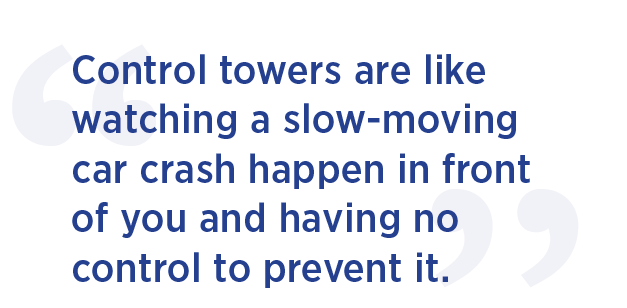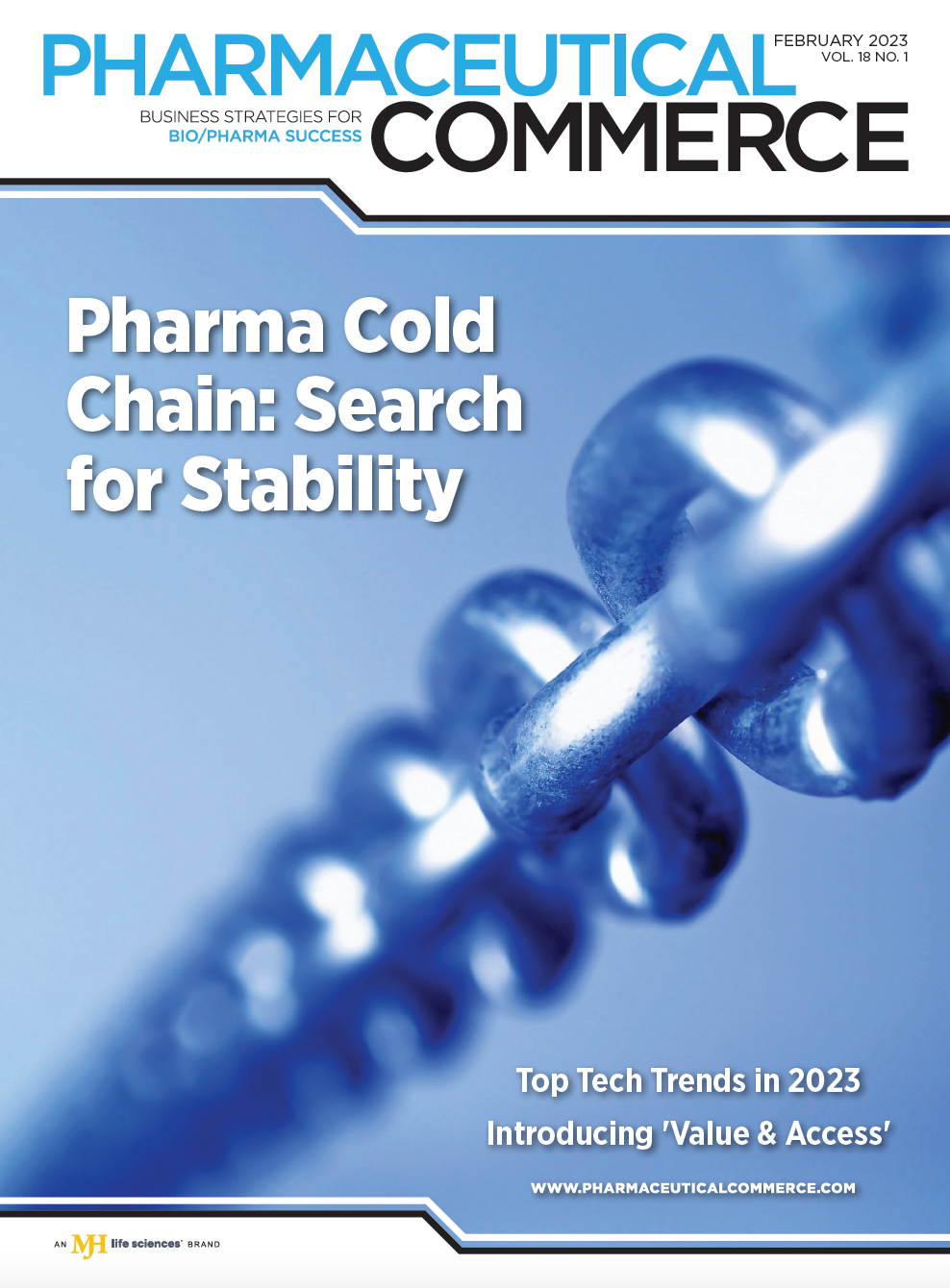Key Supply Chain Tech Trends for 2023
Outlining those advances poised to drive increased use of integrated tactical planning (ITP) in helping manufacturers overcome persistent supply chain obstacles.
In an ideal world, the pharmaceutical supply chain is consistent and problem-free. Demand doesn’t change, there are no disruptions, weather and traffic are perfect, and there are ample logistic resources—capacity, carriers, and clear access to routes—to meet the needs of all pharma manufacturers. In the real world, of course, the pharma supply chain is anything but predictable. Demand ebbs and flows; there are spikes for certain therapeutics in response to disease incidence, and disruptions come in many shapes, sizes, and degrees of severity.
Better planning alone cannot minimize and resolve these disruptions, and holding increasing amounts of costly safety stock is not a financially efficient solution. However, looking ahead in 2023, deploying integrated tactical planning (ITP)—which brings greater integration of planning and operational systems across the supply chain—is critical to better position pharma manufacturers and the supply chain ecosystem to manage, reduce, and even predict supply chain challenges, as well as streamline and optimize operations.
Mahesh Veerina

ITP is a process where appropriate data is pulled together across the supply chain to provide real-time situational intelligence. This data is analyzed, contextualized, and used to drive informed decision-making and model the effects of those decisions in real-time.
In 2023, we can expect significant traction across a number of advances and innovations in technologies that are driving the digitization of pharma supply chain operations to enable ITP to be effectively deployed.
1. Supply chain command centers will become mainstream
Legacy supply chain models were built around domain-specific “control towers” that provided support for decision-making, enabling a degree of visibility and control across a supply chain. However, these control towers were almost exclusively focused on the logistics side and, therefore, limited in terms of their functionality, with deployment being highly siloed.
While control towers could highlight supply chain problems, they were unable to fix them, as there was no capability to intervene digitally when things went wrong. That process would have to be elevated and triaged on a case-by-case basis, requiring phone calls, emails, and manual tasks that prolong the problem-solving process.
Speaking with pharma companies using control towers, they expressed frustration that they are domain-specific and primarily focused on logistics and shipments, but not on product sourcing, manufacturing, storage, and movement. “Control towers,” said one executive, “are like watching a slow-moving car crash happen in front of you and having no control to prevent it.” The introduction of command centers enables all of the predictions ahead to be accomplished. They encompass the entire supply chain in real-time, are scalable, multi-company, and multi-domain, providing complete visibility, from raw material suppliers to warehouses, to last-mile delivery.

The most significant advantage of command centers is that they provide the capability to act on real-time data, predict possible disruptions, and resolve them with workflows or AI recommendations. Instead of just watching the car crash, manufacturers can proactively and automatically prevent it. Command centers allow all participants in the supply chain ecosystem to view data through digital twins, which speeds up decision-making across companies to resolve disruptions. Instead of just looking at shipments between locations, command centers analyze the product flow on the supply and demand side, along with warehouse and in-transit inventory, so more optimized decisions can be made that work across the entire supply chain, not just on the logistics side.
2. Deeper partner collaboration continues to move operations beyond simple visibility
In 2023, we expect to see increasingly deep collaboration as more companies embrace the concept of an integrated supply chain ecosystem that creates value for all involved, from manufacturer to end user. Such collaboration involves complex interconnections and network between entities that extends visibility all the way from active pharmaceutical ingredients (APIs) suppliers to medical providers, clinics, hospitals, and to patients themselves in some instances. All stakeholders are able to observe the supply chain flow and where shipments or packages are in real-time, and any disruption alerts go directly to the company or the functional department that can resolve the issue with speed.
In addition, with the increase in mergers and acquisitions and tight partnerships between pharmaceutical companies, contract development and manufacturing organizations (CDMOs), and contract manufacturing organizations (CMOs), visibility across multiple companies and partners, along with better digital collaboration, is important and necessary. These various organizations cannot be siloed in data, analysis, or execution, or the entire supply chain will fail, especially if there is a major disruption, change in demand, or supply that affects multiple points in the supply chain.
A shipment delay with the potential to disrupt the timely delivery of products and impact a patient outcome should alert someone other than the carrier or logistics provider, who then contacts the distributor or manufacturer, who then contacts their customer support department that can provide alternatives to the end customer, patient, or hospital. A modern supply chain should be something other than a game of telephone tag. All the stakeholders in the value chain, along with the patient or hospital, should be automatically notified, along with customer support, which will provide options for delivery using a modern automated collaboration system. Simultaneously, logistics is notified to look at rerouting options, while manufacturing looks to produce another batch, depending on the delay time. Everyone in the supply chain who can help manage and solve the disruption should have visibility, whether inside or outside manufacturing, or the CDMO. Pharma and CDMOs will look for digital ways to work better together.
3. Planning for the real world with increased adoption of continuous execution planning
Advances in technology are enabling real-time supply chain intelligence, which will make traditional annual or quarterly planning a thing of the past. Leveraging the speed, granularity and immediacy of data, allied to rapid analytics and embedded intelligence will see on-demand, continuous execution planning becoming widely accepted.
The speed of change and disruptions in today’s supply chains means that organizations have to be ready and able to continuously replan, while ensuring alignment with quarterly and monthly integrated business plans and maintaining operational and product compliance. Changes and disruptions in sourcing, manufacturing, logistics, and distribution, along with quick changes in priorities, may dramatically affect monthly plans. The agility and flexibility to pivot and immediately replan, instead of having operations manually resolve disruptions and go off-plan, is critical.
Using live signals from the supply chain, planners and operations specialists can rapidly solve disruptions and get back on track or adjust plans in minutes. Companies will look for digitization solutions that combine data and execute in the gap to eliminate or minimize the variance between planning nd the actual execution data, which can only happen with a highly orchestrated supply chain embedded with digital twins and decision intelligence.

4. Expect to see greater decision intelligence and automated workflows
Within supply chain operations, technology is heralding a move away from slow manual processes that are inefficient and costly, and where important details can get lost. Looking ahead, we will see more use of artificial intelligence (AI) and automated workflows in the supply chain to resolve disruptions.
Embedding machine learning and AI into digital supply chain operations provides a platform to analyze historic data to provide benchmarking on which intelligence can be built through the addition and analysis of contemporary data. This opens up any number of capabilities and use cases. For example, what if AI can decide on routing or carriers depending on current real-time data, carrier performance, or the most cost-efficient routes? Looking at environmental, social, and governance (ESG) requirements, AI can also find the best routes to minimize carbon emissions. This would be like a more sophisticated Waze or Google Maps for logistics. How much time and stress would that save teams and help meet cost-savings goals?
Automated workflows or AI recommendations could also be used for possible temperature excursions, whereby the system can trigger an alert for potential temperature excursions in a shipment and then reroute the shipment to a refrigerated truck or a cold chain repackaging facility, thus maintaining quality compliance and not losing a valuable drug shipment. These AI and automated workflows can initially solve predictable disruptions due to traffic, weather, delays, spoilage, and production delays, and free your supply chain resources to look at priority issues, such as determining allocation due to shortages, long-term disruptions, and sourcing local APIs.
5. Greater automation response to disruptions with digital twins
As more and more companies look to digitize their supply chains, provide end-to-end visibility to all supply chain ecosystem participants, and expand beyond control towers to a true supply chain command center, they will have the signal feed and infrastructure to deploy digital twin technology.
A digital twin is a digital representation of real-life supply chain infrastructure and processes. But it is more than a static model; it is a living model that continuously gathers signals from sensors, transactional signals, and contextual data such as traffic, weather, port closures, and risk signals in the supply chain. The digital twin extends beyond four walls to the entire supply chain ecosystem, which is viewed in real-time. Location, temperature, humidity, or other quality indicators can be monitored, along with contextual information on traffic, weather, and disruption events.
This aforementioned digital representation allows more than just visibility, however. It can perform predetermined actions based on embedded AI models and business rules. Users can also model these automated responses before adding them to production. For example, a user can model a disruption and different response options: rerouting, new production, different inventory allocation, lot sizes to manufacture, planning expedited air freight, or allowing an AI algorithm to recommend the most optimum outcome. After the user is confident of the response, they can put that into production workflows. Because this digital twin encompasses an end-to-end model, potential problems can be quickly identified several nodes out within the ecosystem and corrective action taken in concert with supply chain partners. Having end-to-end visibility also enables better streamlining of the supply chain by identifying duplicate connections set up by different departments.
With the need for better inventory allocation, digital twin technology can model worldwide allocations to match regional demands. Should pharma manufacturers reshore or nearshore manufacturing to be close to the end customer, this technology can easily add new facilities and model the new supply chain to optimize on-time and in-full deliveries.
A digital twin is a powerful tool that provides the command center view of the entire life science supply chain. As companies digitize their supply chains, they will move to digital twin technology to lower costs, improve delivery times, optimize inventory performance, and minimize disruptions to supply chains.
6. Ongoing and increased focus on sustainability
In this age of cell and gene therapies (CGTs) and personalized medicines, each product shipment is much more critical and more valuable. In such a specialized, high-value space, reproducing a lost shipment is a much higher cost and longer delay, and may put patient outcomes at risk or a clinical trial study at risk. Gone are the options of creating a warehouse of safety stock or producing a year’s worth of supply in one production run. With therapies that have a shorter shelf life and require cold chain custody, each shipment must be produced and shipped just in time (JIT).
Because of the expense, time, and patient need, waste is much more unacceptable. The supply chain will focus more on reducing waste, shelf-life expirations, spoilage, temperature excursions, etc. Quality control will be added in every process step, including in-transit, live monitoring. This must be enacted to reduce waste, lower costs, and improve patient outcomes. Better visibility with digital track and tracking will reduce waste, but implementing a more agile and fast supply chain is the ultimate goal to meet the new types of therapies and improve care.
In addition, we are seeing logistics and packaging companies more focused on sustainability and adding reusable packaging and smart sensors. These packages and sensors will be part of the circular economy that produces less waste, lowers costs, and is trackable worldwide.
Future impact
As the trends outlined gain traction, they will help solve a number of underlying needs in the pharma and life science supply chain. To meet the patient’s needs for personalized therapies, new CGTs, and new yet-undiscovered vaccines, the supply chain must move from manual processes to a fully digitalized environment with workflows and AI recommendations using an end-to-end command center. Planning and operations must work together on one single source of truth and solve disruptions together with their third-party partners. Visibility must extend to all participants in the supply chain to resolve issues quickly and get those drugs to the patients as quickly as possible.
Strategic planning, customer relationship management, enterprise resource planning, warehouse management, and transportation management systems, along with real-time inventory and shipment signals, must be viewed and analyzed together in an ITP process. This ensures that one disruption and the proposed resolution do not cause a butterfly effect that ripples throughout the supply chain and causes more havoc on production, inventory, logistics, gross margins, cost, and, most importantly, patient outcomes.
What gains and opportunities can potentially result? Faster clinical trials. A more resilient supply chain to combat disruptions. A supply chain built for the healthy growth of new therapies and vaccines. Less waste and spoilage. And better patient outcomes.
About the Author
Mahesh Veerina is President and CEO of ParkourSC.
